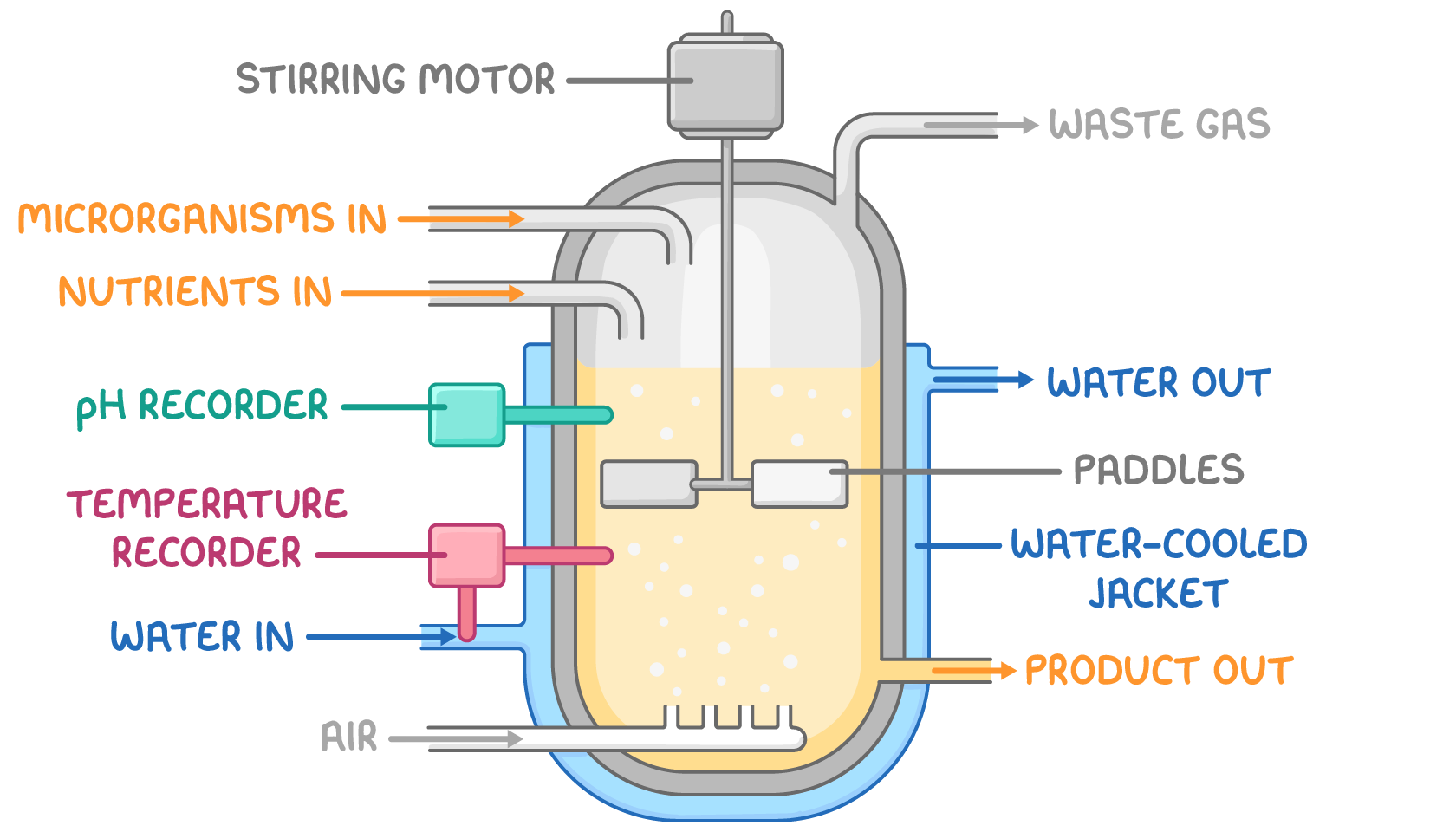Fermenters
This lesson covers:
- What industrial fermentation is
- Why and how we maintain suitable conditions in the fermenter
- The conditions in the fermenter
Industrial fermentation Microorganisms, such as bacteria and fungi, can be used to create valuable substances, such as penicillin, insulin, mycoprotein or yoghurt. |
To ensure their optimal growth, these microorganisms are grown in large tanks known as fermenters, where conditions like temperature, pH, and nutrient levels can be monitored and controlled at all times. When done on a large scale, we call this process industrial fermentation. |
Industrial fermenters  |
|
Sterilisation of fermenters Industrial fermenters are designed to facilitate the sterilisation of vessels before introducing the culture medium and microorganisms. Sterilisation is essential to prevent contamination and ensure a controlled environment for the growth of microorganisms. |
What is the primary purpose of industrial fermentation?
Enhancing product flavour in food processing
Using microorganisms to transform raw materials into valuable products
Regulating temperature in industrial settings
Extracting minerals from raw materials
|
In which type of fermentation process is the introduction of oxygen necessary?
Aerobic fermentation
Anaerobic fermentation
pH-regulated fermentation
Temperature-controlled fermentation
|
Why are paddles or agitators used in a fermenter?
To regulate temperature
To control pH levels
To sterilise the vessel
To mix and distribute nutrients in the culture medium
|
In a fermenter, what is the role of a water-cooled jacket?
Mixing the culture medium
Controlling pH levels
Sterilising the vessel
Regulating temperature
|
Why is the addition of nutrients in a fermenter crucial?
To add oxygen to the liquid medium
To extract final products
To support the growth and metabolism of microorganisms
To control pH levels
|